Aperitivo, Magic Hour in Rome
The magic of the Italian ritual of sitting down for hours eating and drinking as the sun sets
Making writing a daily habit has been harder than I thought. Sitting down even when I have no desire to write, don’t know what to write, or when my muse has flown the coop is a skill in itself. But, today is a good day. Truthfully, it’s always a good day for some reflective travel, and the one thing that popped into my head was the idea for this post. One particular night some time ago, I remember no one being in the mood to cook, and my dad simply said “We’ll make it an aperitivo night.” In my family’s opinion, the concept of aperitivo was one of the best things I brought back from Italy.
Having Spanish roots, I knew that Spain also participates in this beloved ritual. But my first exposure to the concept was in Rome. So in my brain when someone mentions aperitivo, I immediately get visions of Rome with starlings dancing across the Tiber and plates brimming with salty cheeses, panzerotti, cured meats sprinkled with olives and nuts, and glasses of frizzy Campari.

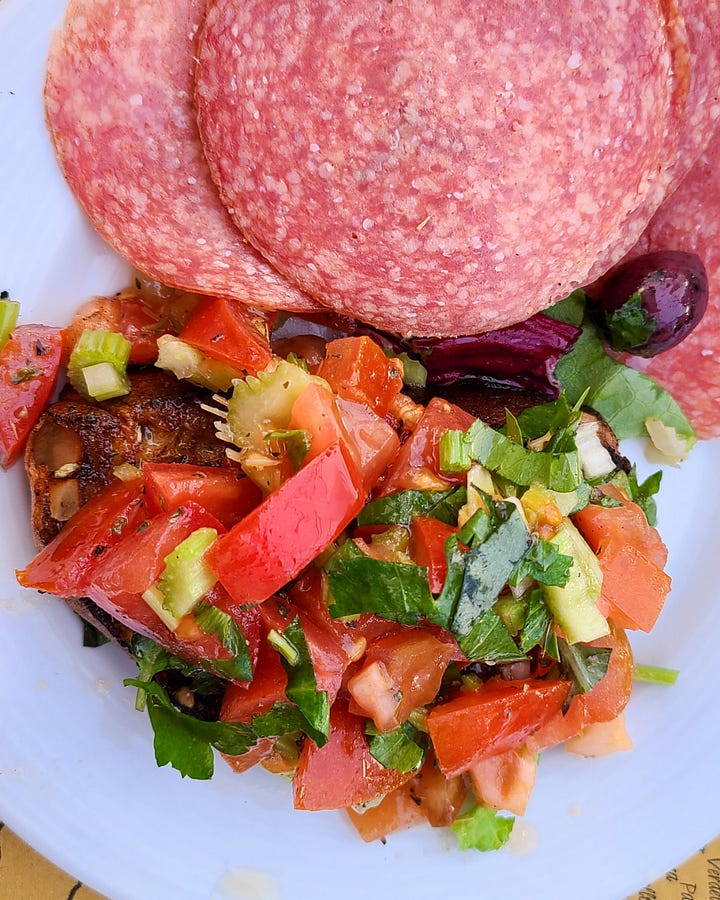
A Weekly Ritual
At the core of this cultural ritual is the concept of “L’appetito vien mangiando,” literally "eating awakens the appetite.” While I always thought that eating soothed the appetite, experiencing this pre-meal ritual for myself convinced me of its magical, time-slowing qualities. Aperitivo usually takes place in the early evening when family and friends gather to enjoy small bites and appetite-stimulating food and drink. Think of it as a light warm-up to dinner.
While studying in Rome, my small, tightly-knit group didn’t meet in class very often as the idea was for graduate students to conduct research independently. However, every Wednesday we did check in with our program director. After two hours of thesis work, we would walk into the narrow streets of Trastevere looking for a spot to enjoy aperitivo together. Whether in Caramellas (this was our favorite spot), Pims, or Trappizino, this time together was essential to maintain the sanity of the work week.
Scrumptious plates of cheese, salami, pizza, and even the occasional fried calamari, with a light Campari cocktail and lots of venting, are good for the spirit.
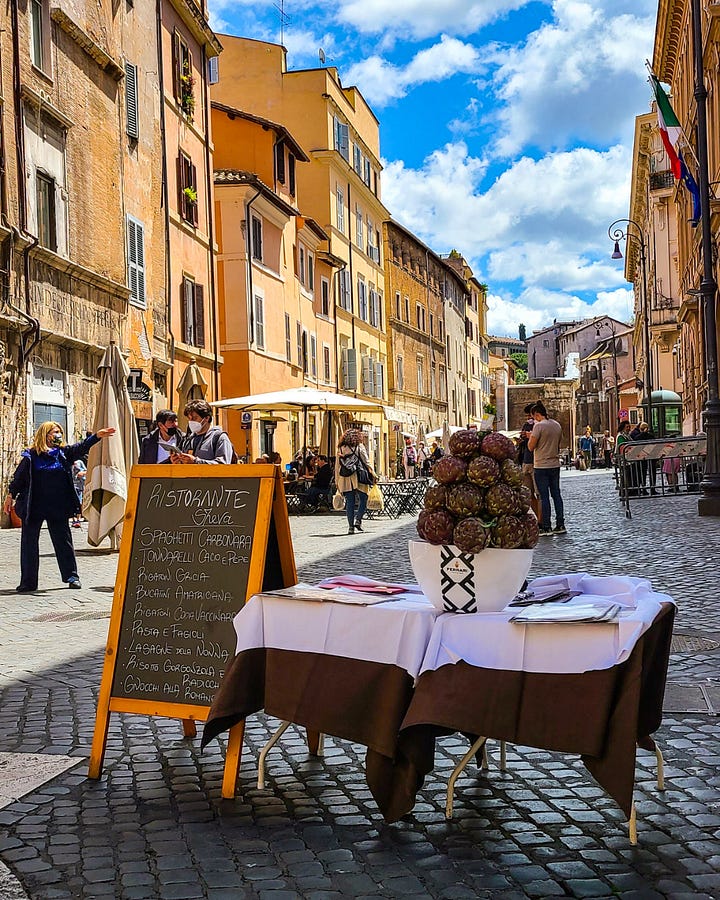
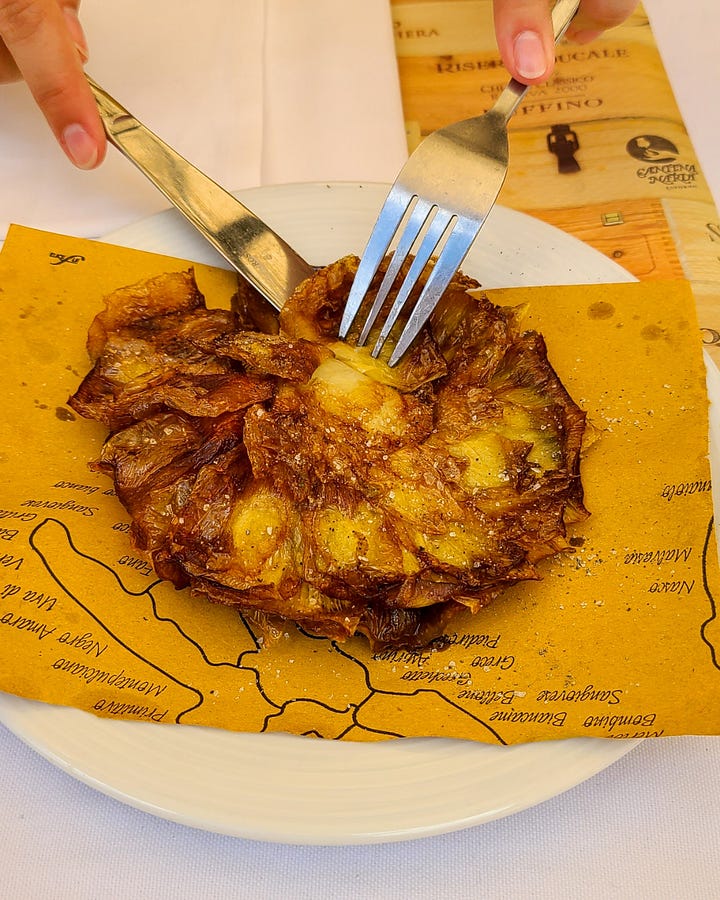
Artichokes, Lentils, & Cocktails
Of all the typical Roman food I tried, the biggest surprise was the fried artichoke. In a little place nestled within the Jewish Ghetto, the Spring harvest of this colorful vegetable was in full swing. The carciofi alla giudia or "Jewish-style artichokes” is made by taking Roman artichokes that are doused in hot oil and opened, making them look like a flower in bloom, and sprinkled with salt and pepper. I’d never been one to go out of my way for vegetables but decided to give it a try. The crispy dried leaves and minimal seasoning let the artichoke’s natural flavors blossom and frankly, it’s become one of my favorite starters.
Besides the shiny new fried artichoke, aperitivo time was usually accompanied by a famous plate of bruschetta. While I’m not a fan of tomatoes getting everywhere, there is something about Italian produce that just makes the difference. The light freshness and the salty taste of the oil on crisp bread did not disappoint. One Italian staple that I did not like, however, was the famed Aperol Spritz. As bitter brews, known in Italy as amaro, are not to my taste. I much preferred its limoncello cousin, mixed with prosecco and the sweet tartness of the citrus. While this is easier to find in the south of Italy (Sorrento, Naples), you can find it in Rome if you simply ask, 9 times out of 10 the bartender was happy to mix the drink.
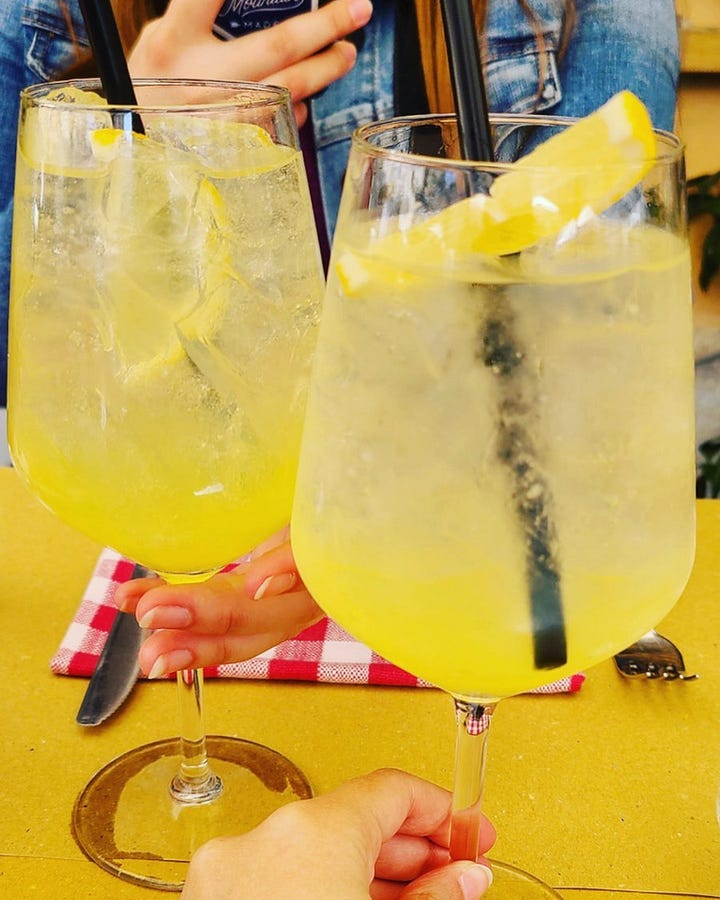
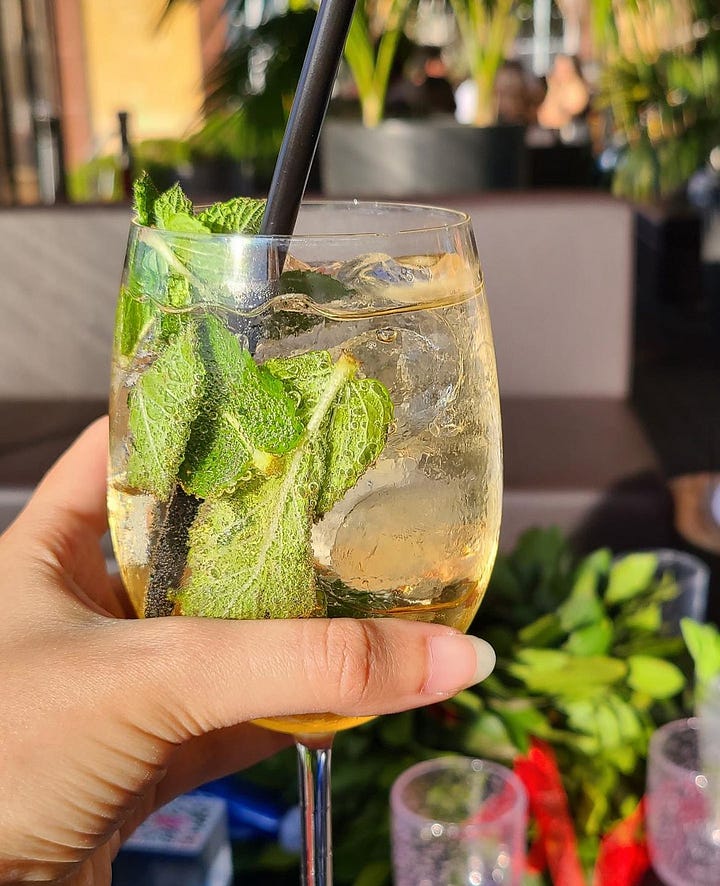
The aperitif cocktail to end all cocktails, however, is the Hugo, which I must’ve ordered a million times while living in Italy. The Hugo is a mix of prosecco, elderflower or lemon balm syrup, seltzer or sparkling water, and mint leaves served on the rocks. It is just as bright and bubbly as the famous aperol, but much sweeter and lighter. I felt like the aperol punched me in the face with its bitter flavors while I was able to enjoy the softer Hugo. While the Hugo originated in the Northern Italian Alps in Tyrol, it has made its way down to the entire peninsula.
Trying something new
In the city of Perugia instead of panzerotti and bruschetta, I tried a selection of cheeses, bread, salami, and braised lentils. I have only ever had lentils in my mom’s famous lentil soup, but never as an add-on atop a piece of bread. Needless to say, for me, it beat the bruschetta’s tomato and basil toppings. The lentils were peppery, earthy, and savory, and paired beautifully with the red wine the waiter said we absolutely had to drink with it. I feel in those situations it’s nice to let the locals take the lead if you let them, and they’re usually right. The wine was delicious.
I remade the lentil recipe for Easter brunch that same year and it was a big hit. And I realized that another gift Italy gave me was the desire and willingness to try new things. I’m a creature of habit and tend to get stuck in one routine if I don’t force myself to break out of it. So living in a place where you eat with the seasons, where changes and subtle shifts and patterns are a fundamental way of life, was a joy.
Although with aperitivo, it’s safe to say we became creatures of habit. Every Wednesday, after 5:00 we made our way down to pick a place to enjoy this time-honored tradition. Now, every time no one feels like cooking, we all grab some small plates, cut the cheese, and break out the wine. And in the back of my mind, I can almost hear Rome’s church bells and see the starlings dance across the Tiber 5,000 miles away.

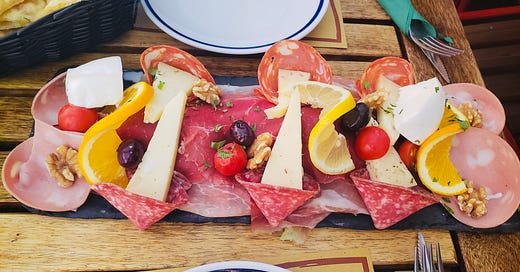





I’m so proud of you, of course I’m biased, but that your writings are extremely beautiful and pleasant to read is an undeniable fact, ❤️